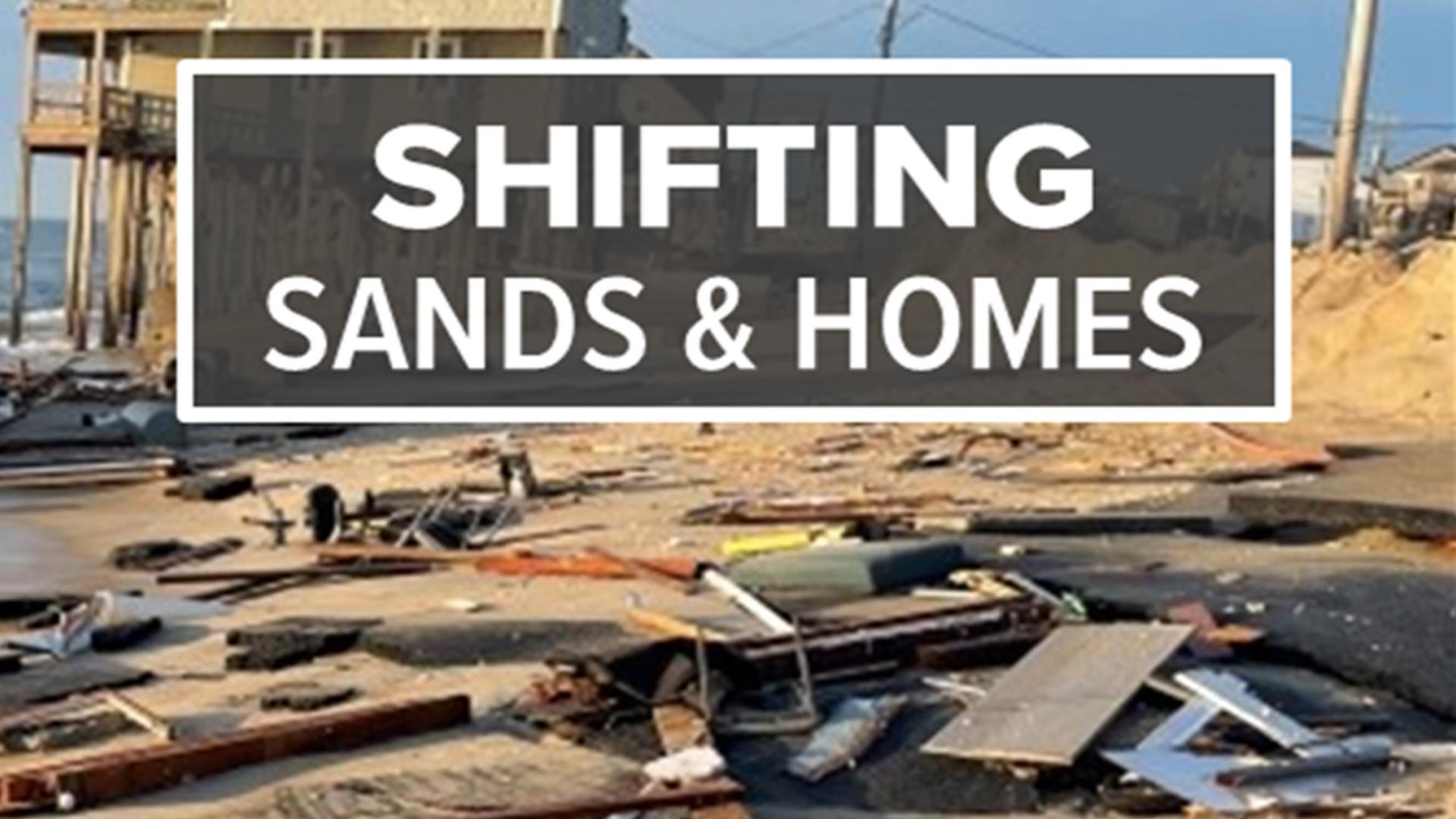RODANTHE, N.C. — Officials on the Outer Banks are advising the public to avoid a stretch of beach in Rodanthe after a number of hazards were discovered along the shoreline Thursday morning.
Cape Hatteras National Seashore said their rangers, while performing periodic monitoring of the shoreline, found "exposed wires, pipes and septic systems" on the "eroded beachfront" adjacent to Ocean Drive. The hazards belong to houses currently standing on the shoreline there.
Seashore officials want people to stay away from that 0.1-mile stretch of beach along Ocean Drive, which is near Rodanthe Pier Place. However, they are urging the public to be cautious along the entire 1.5-mile stretch of beach in front of the village, in case hazards may be present in other areas.
The Seashore said Dare County is in the process of contacting the property owners to make them aware of the hazards while Cape Hatteras Electric Cooperative is working to identify the exposed wires and ensure none of them are dangerous if touched.
The discovery comes after a series of house collapses into the Atlantic Ocean, causing debris to spread for miles.
Wind, waves, rising seas, and storms have all led to erosion of the Seashore, specifically near the villages of Rodanthe and Buxton. Throughout the year, many of these homes situated atop pilings are partially or fully covered by water, park officials previously told 13News Now.
In November 2023, Seashore officials started tearing down "threatened oceanfront structures" that were determined to pose a safety risk as coastal erosion impacts much of the coast.
Those living in Rodanthe have sought to use beach nourishment to address the rapidly eroding shoreline, but the proposed solution faces high costs and would only temporarily fix the problem before needing to be done again.
According to previous 13News Now coverage, new research could help the area adapt to the changes, rather than throw a bandage on the problem caused by sea-level rise.
In 2023, the San Diego Union-Tribune interviewed a renowned oceanographer in California, who uncovered new evidence that sand doesn’t always flow south in a particular part of San Diego. That challenges a notion that has shaped efforts to rebuild the region's beaches for years.



